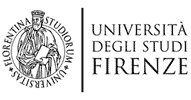Corporate Governance and Financial Institutions
CFU: 12
Year: I
Instructors: Sara De Masi and Federica Ielasi
Corporate Governance - Sara De Masi
The recent financial crisis and corporate scandals have put the light on how companies are managed.
Corporate governance deals with the set of policies, process and customs by which an organization is directed. This course aims to provide a deep understanding of the fundamentals of corporate governance from a variety of angles - the board of directors, senior management, investors, media, regulators and society ñ and from an international perspective. After a highlight on the main corporate governance systems (Anglo-American, German and Italian), relevant theories and issues of corporate governance practices will be analyzed (e.g. ownership and control, conflict of interests, board of directors, institutional environments). Students will gain skills required for understanding corporate behaviors. They will be introduced to issues in corporate governance through lectures, class discussions and cases study.
Course overview:
Definitions of corporate governance; main theories; corporate governance systems around the world (outsider systems versus insider systems); Boards of directors: roles and functions, composition and gender diversity, CEO compensation and stock options, Corporate governance codes, Corporate governance in banks.
Tricker B., 2009, Corporate Governance. Principle, Policies and Practices, Oxford University Press.
Goergen M., 2012, International Corporate Governance, Pearson ed.
Financial Insitutions - Federica Ielasi
The course aims to give a complete view of the Önancial system and the recent innovations in the national and international regulation concerning the Önancial institutions. The first part of the course aims at analyzing several issues relating to fundamentals of financial markets and institutions, analyzing the main financial intermediaries: commercial banks, pension funds, investment companies. The second part of the course concerns the analysis of the main risks faced by financial institutions: credit risk, liquidity risk, interest rate risk, and insolvency risk. The last part of the course deepens the main methodologies for managing risks of the balance sheet with derivative securities, loan sales and securitization. The objectives of the course are to strengthen the knowledge about financial markets and institutions, to strenghten the skills associated with the comprehension of the function of financial markets and their recent evolution, both in the national and international field, and to strenghten the knowledge about models for measuring and managing financial risks.
Saunders, Cornett, 2015, Financial Markets and Institutions, 6th edition, McGraw-Hill


